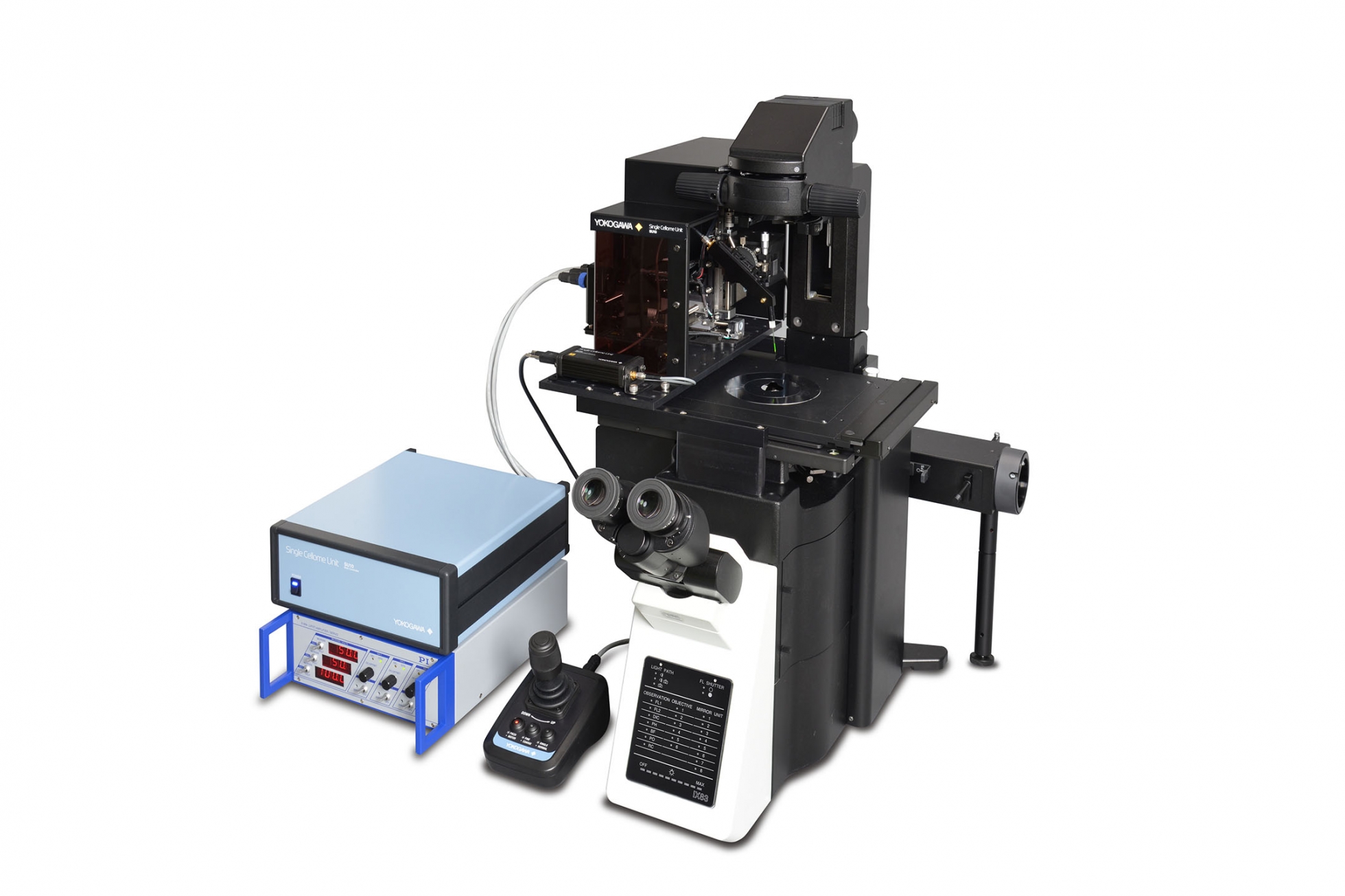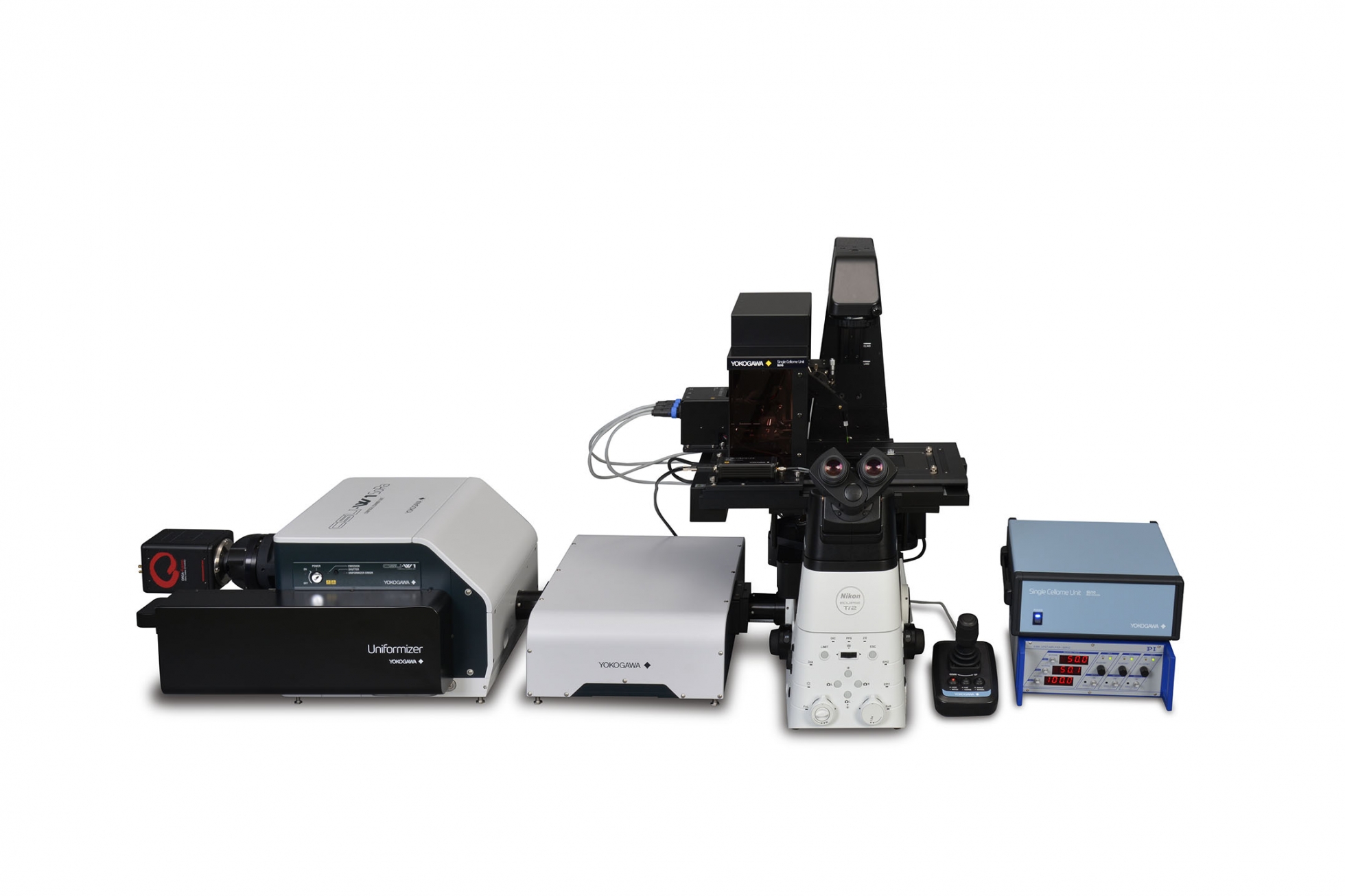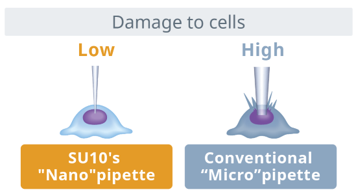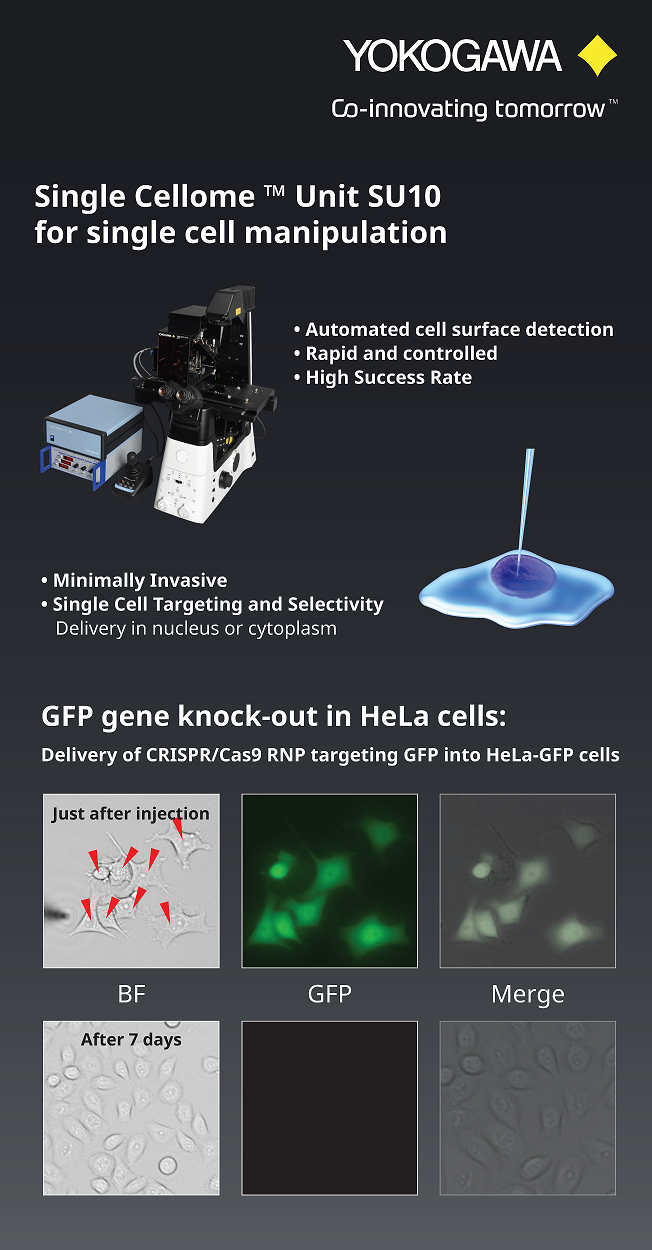Introduction
Single Cellome Unit SU10 enables the delivery of substances, such as genome editing tools, directly to the cytoplasm or nucleus of targeted single cells.
For use with an inverted optical microscope. The microscope is not included with the SU10.
The SU10 lowers the damage to a cell with the nanopipette because its tip size is less than 1/10 of a tip used for microinjection.
Automatic detection of cell surface enables a high success rate of insertion to the intended depth of a cell.
The delivery operation uses an electrical method rather than pneumatic or hydraulic pressure.
The differece from traditional transfection methods is that the SU10 can deliver materials into the selected cells.
The SU10 enables direct delivery of reagents into the cytoplasm or nucleus.
In addition to the above-mentioned “difference from traditional transfection methods”, due to automated cell surface detection, the suspension of cells is not required during injection.
Features / strengths
1. Single-cell targeting with direct delivery into nucleus or cytoplasm
- Select cells for delivery while observing under a microscope and deliver substances to into nucleus or cytoplasm of targeted cells.
- Easy Control of XY-position and automatic control of delivery Z-position in software.
2. Minimal damage to cells
- The nanopipette is a glass pipette with minimum tip outer diameter of several tens of nanometers, minimizing damage to cells.
- Delivery with high cell viability enables live single-cell analysis.
3. Automated, high speed, and high success rate
- The SU10 uses automated cell surface detection, insertion, and delivery to the cell. The process takes approximately 10 seconds with a 90% success rate. (Experiment by Yokogawa)
- Operations that were previously performed manually by experienced researchers are much easier with SU10.
4. Examples of cells that can be targeted
- Cell line (HeLa, HEK293, CHO, MDCK, HepG2, etc.)
- Primary cell culture (Neuron, Hepatocyte, etc.)
- Stem cell lines (iPS cell, ES cell, etc.)
- Immune cell lines (T cell, Ba/F3 cell, etc.)
- Plant cell with cell wall
5. Examples of materials that can be injected
- CRISPR-Cas9 (Cas9 RNP)
- Protein (antibody, GFP, etc.)
- Nucleic acid (single-stranded DNA, etc.)
- Fluorescent reagent
Specification in detail
Operation Environment
15 to 35℃, 20 to 70%RH No condensation, altitude up to 2000m
Tip outer diameter of nanopipette (in case of SU10ACC-NP01)
Under 100nm
Supporting document







